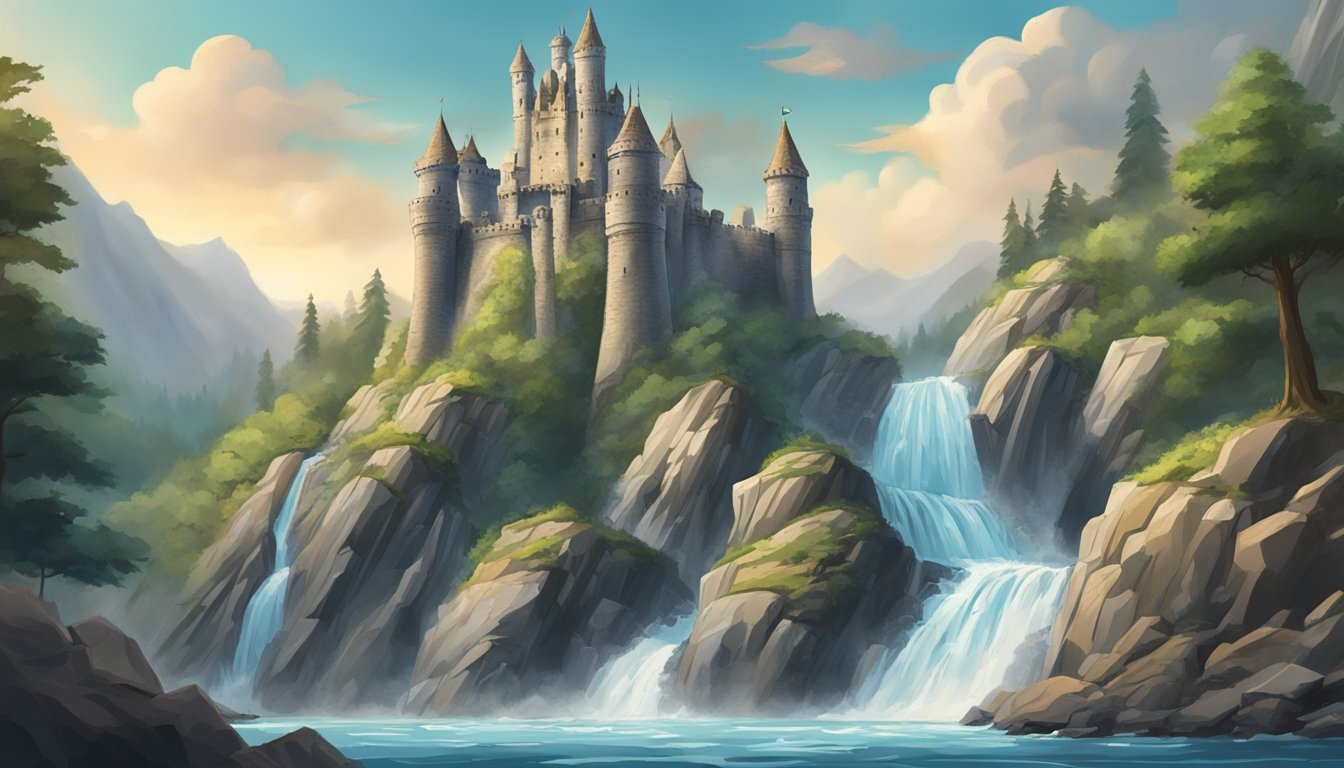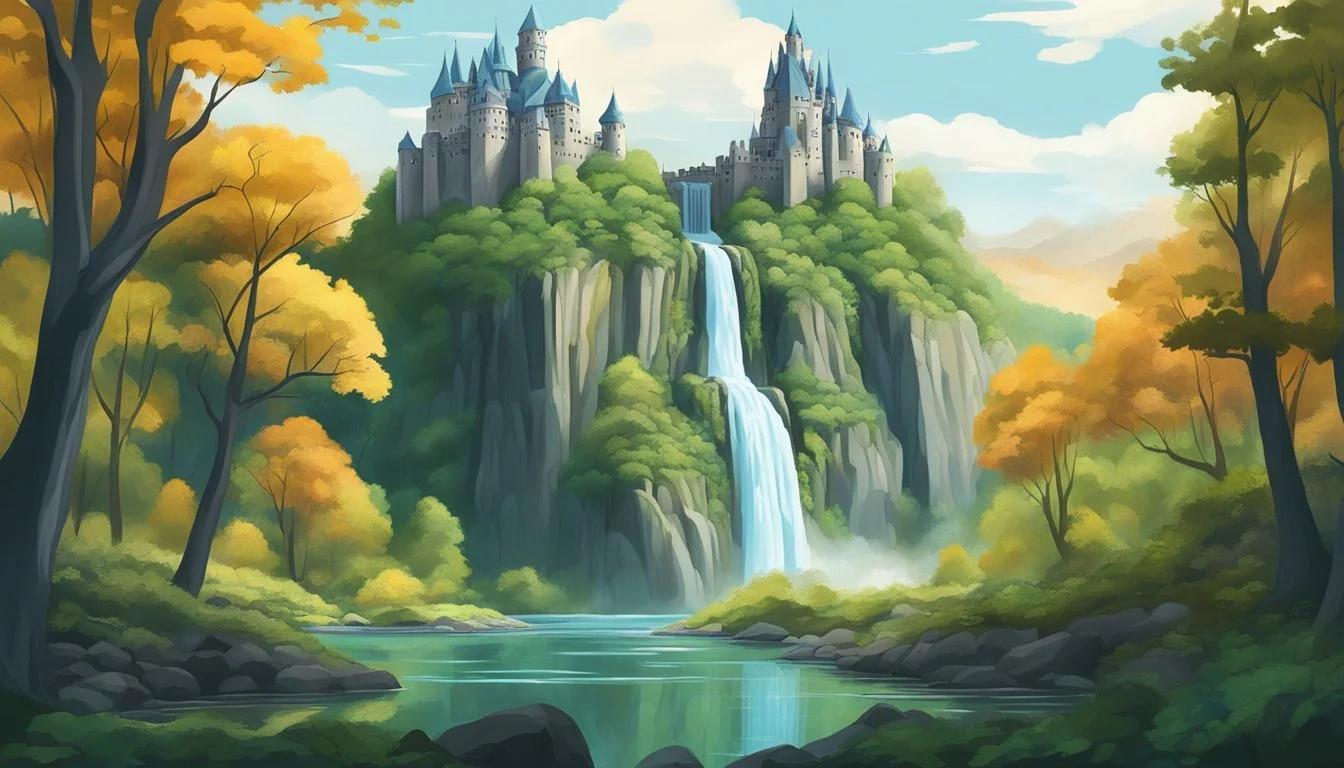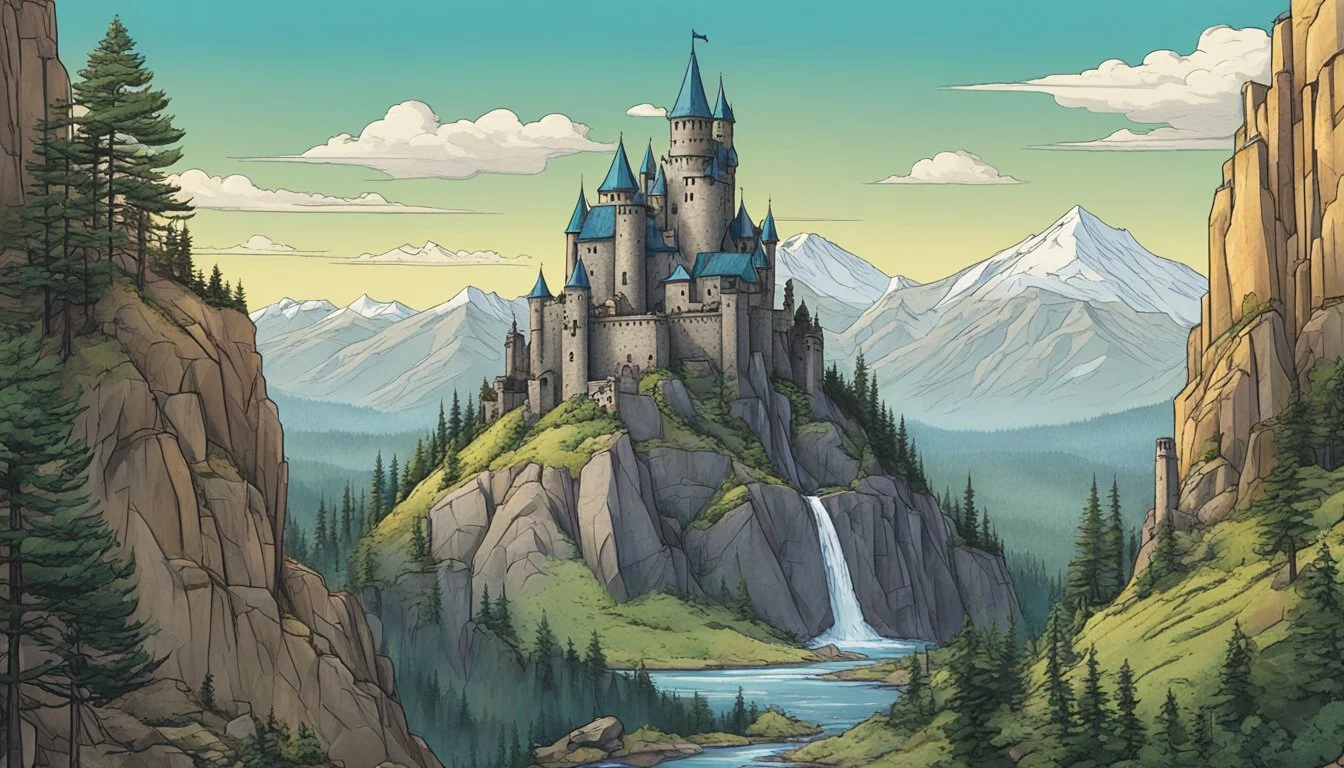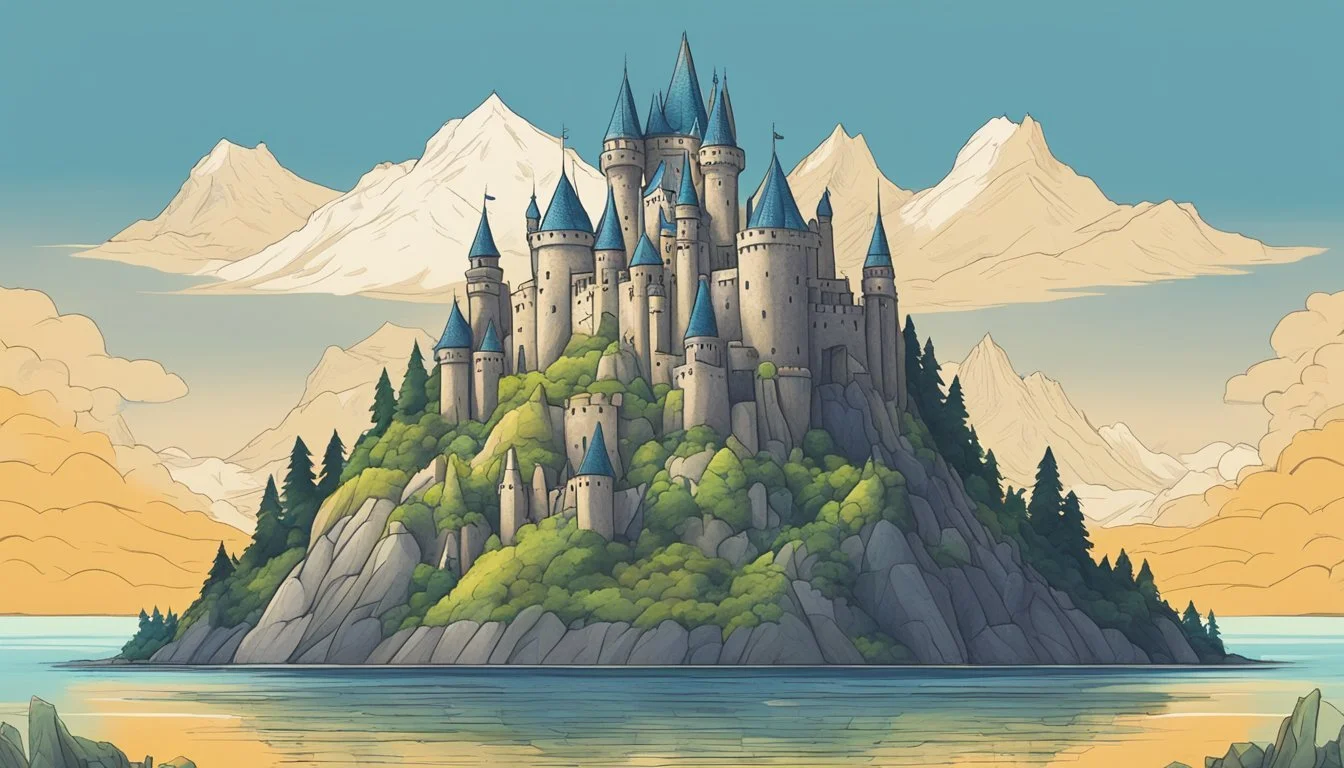Castle Rock vs. Liquid Death
Comparing Bottled Water Brands
Castle Rock and Liquid Death are two names making waves in the bottled water market. Both brands offer unique qualities that set them apart. Castle Rock prides itself on delivering a crisp flavor akin to a refreshing mountain hike, devoid of an aftertaste. Meanwhile, Liquid Death has garnered attention for its mountain spring water from the Austrian Alps, presented in sustainable aluminum cans.
When comparing the two, the health and environmental advantages of Liquid Death's aluminum packaging stand out, as aluminum cans contain 70% recycled material and offer a significant reduction in plastic waste. This has made Liquid Death popular among environmentally-conscious consumers. On the other hand, those who prioritize taste might favor Castle Rock's spring water.
Ultimately, the choice between Castle Rock and Liquid Death hinges on individual preferences for flavor, sustainability, and packaging. Both brands excel in their own respects, making them worthy of consideration in the ever-growing bottled water industry.
Understanding Bottled Water
The global bottled water market has evolved significantly in recent years, encompassing various types of water each with distinct qualities. Key categories include spring water, purified water, and specialty options like sparkling and flavored water.
The Rise of Bottled Water
Bottled water consumption has surged due to convenience and health consciousness. Consumers increasingly prefer it over sugary drinks for hydration, attracted by the promise of pure, safe water.
Marketing strategies emphasize eco-friendly packaging, such as aluminum cans and recycled materials. Brands like Liquid Death highlight sustainability, contrasting with traditional plastic bottles.
Health concerns also play a role. Natural spring water and mineral water boast beneficial mineral content, while purified water undergoes filtration for purity. The variety caters to different preferences and needs.
Types of Bottled Water
Different types of bottled water are available to suit various tastes and requirements:
Spring Water: Sourced from natural springs, often featuring minerals that enhance flavor and health benefits.
Purified Water: Subjected to processes like reverse osmosis, it is the cleanest option, free from contaminants.
Sparkling Water: Carbonated for those who enjoy fizzy drinks, occasionally with added minerals.
Flavored Water: Contains natural flavors for variety without extra calories.
These choices reflect a broad spectrum of consumer demands, from basic hydration to specific health benefits, enhancing bottled water's appeal.
Brands in Focus
Castle Rock and Liquid Death present distinct approaches and unique stories within the water brand market. While Castle Rock focuses on its natural spring source, Liquid Death leverages a bold, punk-rock image to stand out.
Castle Rock: A Profile
Castle Rock water is sourced from natural springs in the Austrian Alps. This pure spring water is known for its crisp flavor, reminiscent of a refreshing morning hike.
Castle Rock emphasizes its origin and purity, targeting consumers who prioritize natural sources. The brand ensures a commitment to environmental sustainability, including using biodegradable packaging whenever possible.
Additionally, Castle Rock has built its reputation on offering high-quality spring water with a clean taste that appeals to health-conscious individuals. Its approach to branding is subtle yet effective, drawing in a steady stream of loyal customers.
Liquid Death: Brand Origins
Liquid Death was founded by Mike Cessario. The brand name "Liquid Death" might sound intimidating, but it describes a water product with a twist. Marketed as a way to "murder your thirst," this water stands out in the crowded market.
Launched as a canned water option, Liquid Death comes in both sparkling and still varieties. The company's products are available in multiple retail outlets like 7-11 and Whole Foods. Liquid Death differentiates itself by promoting an edgy, punk-rock image.
Their slogan and graphic design appeal to a younger, rebellious demographic, setting them apart from traditional bottled water brands. This strategic branding has helped Liquid Death achieve notable success, becoming a billion-dollar beverage brand.
Environmental Impact
Both Castle Rock and Liquid Death aim to address environmental concerns through their packaging choices and sustainability efforts. By evaluating their environmental impacts, consumers can make more informed decisions.
Plastic Bottles vs. Aluminum Cans
Castle Rock primarily uses plastic bottles, which have a significant impact on the environment. The production and disposal of plastic bottles contribute to pollution and a large carbon footprint. Plastic is less likely to be recycled and often ends up in landfills or oceans.
Liquid Death packages its water in aluminum cans, which are lightweight and infinitely recyclable. Aluminum cans use less fuel during transportation due to their lighter nature, resulting in reduced carbon emissions. Cans are more environmentally friendly since aluminum is recycled at a higher rate compared to plastic.
Sustainability Initiatives
Castle Rock has implemented several sustainability initiatives, including efforts to reduce plastic waste and encourage recycling. They also collaborate with environmental organizations to mitigate their environmental footprint. However, plastic remains less eco-friendly even with these efforts.
Liquid Death emphasizes eco-friendly practices by promoting the recyclability of aluminum cans. The brand highlights their lower carbon footprint and collaborates with environmental causes to improve sustainability. They also engage in cleanup initiatives to reduce plastic pollution.
Consumers looking for an environmentally responsible option may find Liquid Death's use of aluminum cans and sustainability practices more aligned with eco-friendly principles.
Distribution and Availability
Castle Rock and Liquid Death offer their bottled water through various channels, ensuring consumers can access their products conveniently. These channels include both traditional retail stores and online platforms.
Retail Presence
Castle Rock water can be found in numerous brick-and-mortar locations. It is commonly available in grocery stores and large retail chains like Whole Foods, Target, and Walmart. These retailers provide easy access for consumers looking to buy Castle Rock water in person.
Liquid Death, on the other hand, has also made its presence known in key retail chains. It is sold at 7-11, Sprouts Farmers Market, Whole Foods, and Sheetz. This broad availability ensures that customers can find Liquid Death in convenience stores and larger grocery markets alike.
Online Retail and Direct-to-Consumer
Both brands have embraced online retail, acknowledging the growing trend of e-commerce. Castle Rock offers its products directly through its website, allowing customers to order their preferred quantities with ease. Additionally, Castle Rock water is available on Amazon, which provides rapid delivery options and subscription services that can ensure a regular supply.
Liquid Death has a strong online presence, too. It is possible to purchase directly from the company's website, where customers can choose between sparkling and flat options. Furthermore, Liquid Death is listed on Amazon, making it accessible to a broad audience with the convenience of fast shipping and subscription services.
In summary, both Castle Rock and Liquid Death have effectively utilized retail and online channels to make their bottled water products widely available to consumers.
Consumer Experience
When comparing Castle Rock and Liquid Death, consumers typically focus on two main areas: the taste and palatability of the water, and the packaging and convenience of the products.
Taste and Palatability
Castle Rock and Liquid Death offer distinct taste profiles that cater to different consumer preferences. Castle Rock’s water is sourced from natural springs and is known for its clean, crisp flavor, making it a favorite among those who enjoy a pure and refreshing sip. With its smooth taste, Castle Rock is excellent for hydration.
Liquid Death, on the other hand, provides both still and sparkling options. Its sparkling variety is particularly known for having tiny, persistent bubbles that deliver a brisk, prickly sensation. Some describe the mouthfeel like a light Velcro texture, making it a unique and enjoyable option for those who prefer sparkling beverages.
Packaging and Convenience
The packaging for both brands reflects different priorities. Castle Rock primarily offers water in glass bottles, emphasizing sustainability and the ability to reuse the bottles. This makes it less convenient for on-the-go hydration but highly appealing to eco-conscious consumers. Glass packaging also tends to preserve the water's taste better, delivering a fresher experience.
Liquid Death uses aluminum cans, which are also environmentally friendly due to their recyclability. The cans provide a rugged and innovative aesthetic, which appeals to a younger audience. They are lightweight and convenient for travel, easily fitting in backpacks and coolers. This makes Liquid Death a popular option for outdoor events and casual settings.
Marketing Strategies
Liquid Death has built its reputation through innovative and provocative marketing techniques that have set it apart in the beverage industry. By contrast, Castle Rock adopts a more traditional yet effective approach.
Branding and Positioning
Liquid Death employs a bold, irreverent branding strategy that merges elements from energy drinks and craft beers. The brand’s cans feature gothic designs and skull imagery, appealing to a young, alternative audience. Their tagline, “Murder your thirst!”, encapsulates their aggressive and rebellious ethos, which has driven significant buzz.
In contrast, Castle Rock focuses on sustainability and health-oriented branding. Emphasizing its natural spring water sources and eco-friendly packaging, Castle Rock targets a more conventional yet environmentally-conscious consumer base. This quieter, more refined approach positions Castle Rock as a trustworthy, premium option in the bottled water market.
Social Media Influence and Collaborations
Liquid Death leverages social media platforms like Instagram and TikTok to craft viral content that resonates with millennials and Gen Z. Collaborating with influencers and celebrities, including Travis Barker, has amplified their reach. These partnerships often revolve around edgy and humorous content, further cementing the brand’s unconventional image.
Castle Rock, meanwhile, maintains an active social media presence but focuses more on highlighting its sustainability initiatives and health benefits. Their collaborations often feature eco-conscious influencers and health experts. While their strategy generates less viral buzz compared to Liquid Death, it effectively reinforces their brand values and appeals to a dedicated, niche audience.
Comparative Analysis
When comparing Castle Rock and Liquid Death, it's important to consider pricing, value, health, and nutritional aspects. These factors will help determine which bottled water offers the best overall benefit to consumers.
Pricing and Value Proposition
Castle Rock and Liquid Death come with different pricing strategies. Liquid Death is often positioned as a premium water brand, with prices typically around $1.62 per can for their Mountain Water at popular retailers such as Target. Castle Rock, on the other hand, tends to be more cost-effective, especially when purchased in bulk.
Brand Product Price (approx.) Liquid Death Mountain Water $1.62 per can Castle Rock Still Water varies; often less per liter/oz in bulk
Both brands offer eco-friendly packaging, but Liquid Death emphasizes its use of 70% recycled aluminum cans. This can justify its higher price for environmentally-conscious consumers. In terms of value, Castle Rock offers a more budget-friendly option without skimping on quality.
Health and Nutritional Considerations
From a health perspective, both Castle Rock and Liquid Death provide safe drinking water. Castle Rock sources its water from natural springs, ensuring it is naturally filtered and free from harmful toxins. Liquid Death, likewise, sources its water from the Austrian Alps, known for high purity and no toxic substances.
Nutritional Content:
Both brands offer zero-calorie, zero-sugar options, making them healthy choices.
Liquid Death also offers sparkling variants, which include added carbonation but no artificial flavors or vitamins.
Consumers looking for plain, unflavored water will find both brands to be excellent choices. Neither brand adds unnecessary vitamins or minerals, keeping the water's natural profile intact. This is significant for those who prefer their water as pure as possible without additional ingredients.
Social Responsibility
Both Castle Rock and Liquid Death take significant steps in promoting social responsibility with distinct approaches.
Charity and Community Initiatives
Castle Rock Water Company has made a notable impact by focusing on charitable activities in its community. The company is certified For Life for Social Responsibility, recognizing its efforts in social and environmental realms. Their initiatives often support local causes, ensuring that their operations positively impact their surroundings. This approach underscores their commitment to making a meaningful difference beyond just selling water.
Liquid Death, though a newer player, has embraced a unique, edgy approach to community engagement. The brand’s campaign, “Punk Needs Water, Too”, has raised both awareness and funds for various causes. Their charitable efforts often resonate with a younger, more rebellious audience, aligning with their brand persona. By collaborating with music and cultural icons, they effectively drive social contributions with a modern twist.
Campaigns and Environmental Advocacy
Castle Rock actively participates in environmental advocacy, emphasizing sustainable practices. Their For Life certification also highlights their commitment to reducing environmental impact. Projects like Loving Homes for Plastic focus on minimizing plastic waste, illustrating their dedication to environmental stewardship. Castle Rock positions itself as a leader in sustainable water production, prioritizing eco-friendly operations.
Liquid Death adopts a bold stance against plastic waste with its “Death to Plastic” campaign. Their approach includes selling water in recyclable aluminum cans, radically different from traditional plastic bottles. By marketing their product with an aggressive environmental message, Liquid Death educates consumers about the harm of plastic pollution and promotes sustainable choices. Their advocacy aligns with their brand’s fearless and audacious identity, challenging the status quo in the industry.









